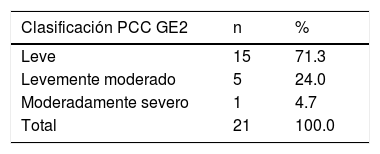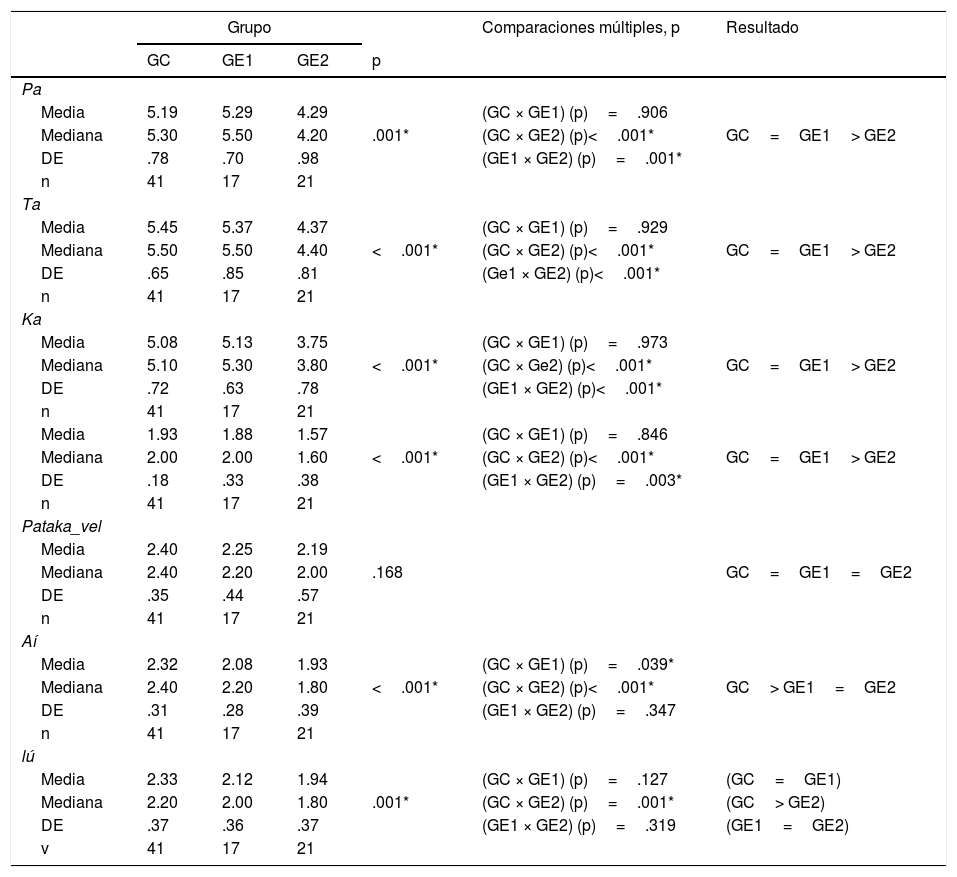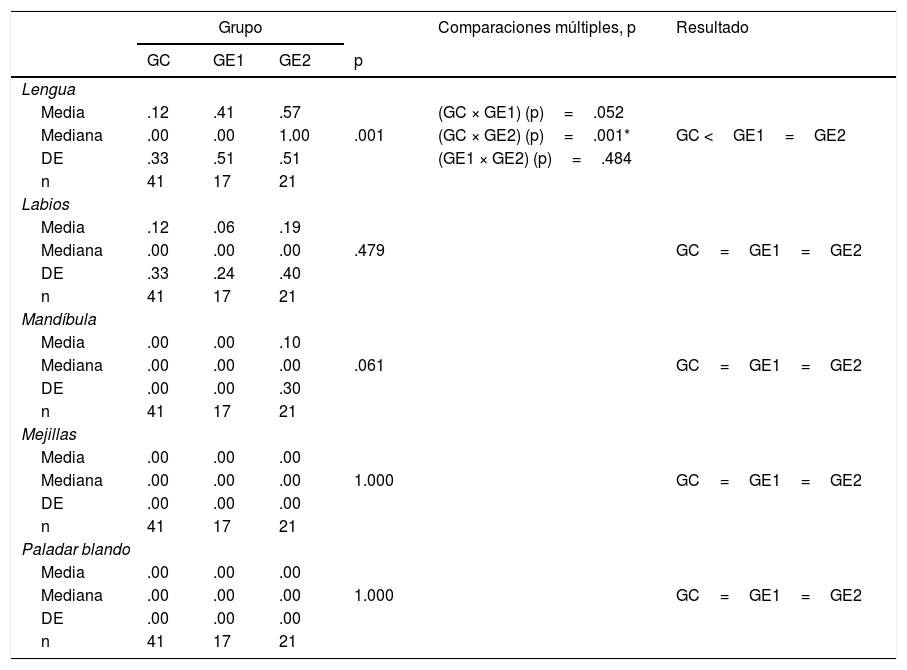Identificar el desempeño motor oral y caracterizar el sistema fonológico de niños de enseñanza fundamental entre 8 a 12años de edad sin alteraciones de los sonidos del habla y/o del lenguaje oral y escrito, y de niños que presentan alteraciones del habla con o sin dificultades de lectura y escritura.
MétodoParticiparon del estudio 79 niños de enseñanza fundamental, entre 8 y 12años, de escuelas públicas y del ambulatorio del Departamento de Fonoaudiología de la Unifesp. Se aplicó el protocolo de evaluación de ABFW (nominación) y, tras su análisis, los niños fueron divididos en tres grupos: GC (grupo de control) sin alteración del habla y del lenguaje escrito; GE1 (grupo de estudio1) con alteración del habla y sin alteración en la lectura y en la escritura, y GE2 (grupo de estudio2) con alteración del habla y de la lectura y escritura. Se calculó el índice PCC de los tres grupos. Las pruebas de diadococinesia, praxias y habilidades orales fueron aplicadas en todos los niños. Para la comparación del desempeño entre los grupos se utilizaron los test Kruskal-Wallis, con las comparaciones múltiples de Tukey, y el test Mann-Whitney. El nivel de relevancia de significación considerado fue de .05 (5%).
ResultadosEl test de nominación ABFW y el índice de PCC fueron semejantes para el GE1 y GE2. Las alteraciones más predominantes entre los dos grupos fueron un 65.78% de simplificación del encuentro consonántico, un 34.21% de simplificación de la consonante final y un 28.94% de simplificación de líquidas. El GE2 presentó el peor desempeño en las pruebas de diadococinesia. Las habilidades de praxia lingual presentaron el peor desempeño: el GC presentó un 11.36% de dificultades, mientras que el GE1 alcanzó un 41.17% y el GE2 un 57.14%.
ConclusiónEn los grupos GE1 y GE2 las alteraciones del habla predominantes fueron la simplificación del encuentro consonántico, simplificación de la consonante final y simplificación de las líquidas. El grupo GE2 (niños con dificultades de lectura y escritura) obtuvo un menor desempeño en las pruebas de velocidad y repetición (maduración neuromotora) y en las habilidades linguales, lo que sugiere un déficit del dominio motor oral. Este estudio apunta hacia la necesidad de evaluación del desempeño motor oral en los niños con trastornos persistentes del habla con o sin dificultades en la lectura y la escritura.
To identify oral motor performance skills and characterize the phonological system of primary school children aged between 8 and 12years without alterations in speech sounds and/or oral and written language, and in children who present speech changes with or without reading and writing difficulties.
MethodThe study included 79 elementary school children between 8 and 12years from public schools and the outpatient clinic of Unifesp's Department of Speech and Hearing Therapy. The ABFW evaluation protocol (naming) was applied and, after analysis, the children were divided into three groups: CG (control group) with no change in speech and written language, GE1 (research group1) with speech impairment and no change in reading and writing, and GE2 (research group2) with speech and reading and writing impairment. The PCC index of the three groups was calculated. Tests for diadochokinesia, praxis and oral skills were applied in all children. Kruskal-Wallis tests, with multiple comparisons of Tukey, and the Mann-Whitney test were used to compare the performance between the groups. The significance level considered was .05 (5%).
ResultsThe ABFW naming test and the PCC index were similar for GE1 and GE2, although GE2 showed 5 children with mild and 1 with moderately severe speech impairment. The others presented only mild alterations. The most predominant alterations between the two groups were 65.78% simplification of the consonant encounter, 34.21% simplification of the final consonant and 28.94% liquid simplification. The GE2 presented the worst performance in the diadochokinesis tests. Lingual praxia abilities showed the worst performance, with the CG presenting 11.36% of difficulties, while GE1 presented 41.17% and GE2 57.14%.
ConclusionIn groups GE1 and GE2, the predominant speech changes were simplification of the consonant encounter, simplification of the final consonant and liquid simplification. The GE2 group (children with reading and writing difficulties) performed less well in tests of speed and repetition (neuromotor maturation) and in language skills, which suggests deficit of the oral motor domain. This study highlights the need to evaluate oral motor performance in children with persistent speech disorders with or without difficulties in reading and writing.















